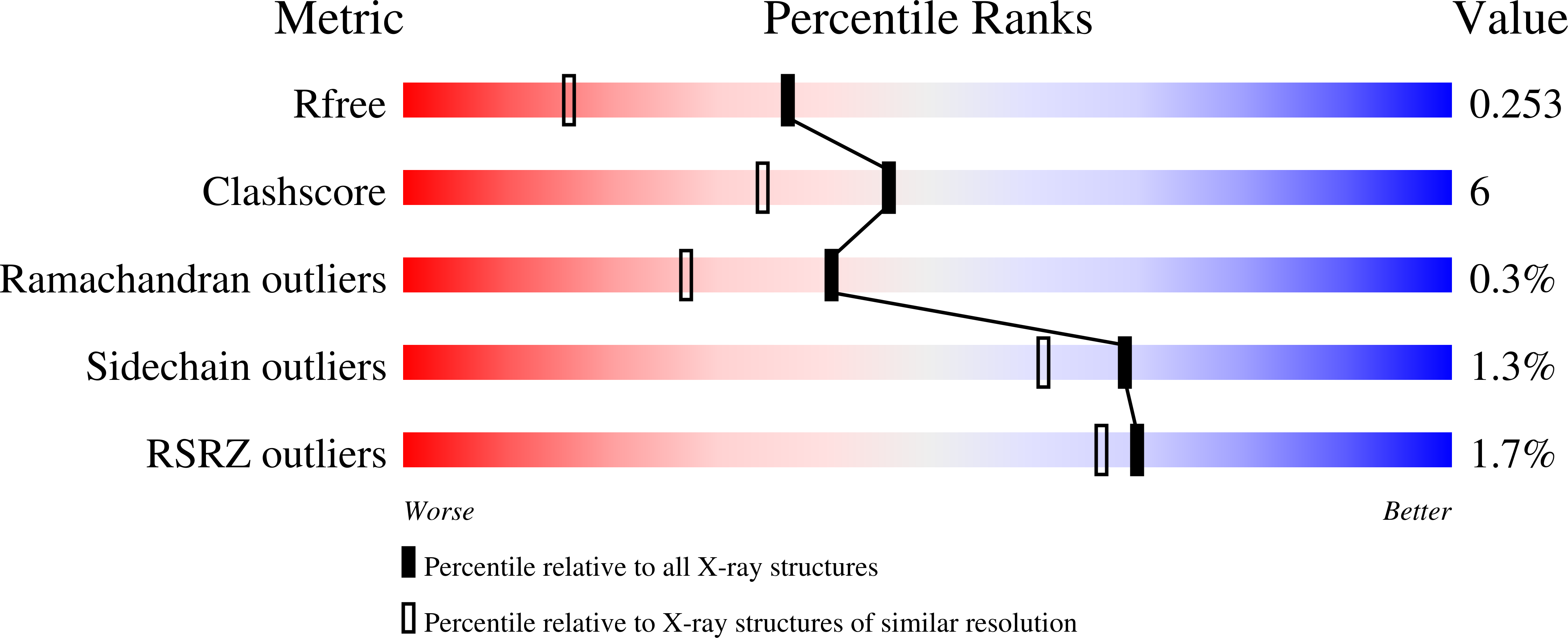Characterization of a glycoside hydrolase endolysin from Acinetobacter baumannii phage AbTZA1 with high antibacterial potency and novel structural features.
Premetis, G.E., Stathi, A., Papageorgiou, A.C., Labrou, N.E.(2023) FEBS J 290: 2146-2164
- PubMed: 36413083
- DOI: https://doi.org/10.1111/febs.16686
- Primary Citation of Related Structures:
8APP - PubMed Abstract:
The classification of Acinetobacter baumannii by WHO as 'priority 1' antibiotic-resistant pathogen underlines the urgent need for novel antimicrobial agents towards this pathogen. In this work, screening of the A. baumannii phage AbTZA1 genome allowed the identification of a putative endolysin (AbLys1, EC3.2.1.17) that belongs to the glycoside hydrolase family 24 (GH24). The sequence of AbLys1 was cloned, expressed in E. coli and purified. The lytic activity and specificity of AbLys1 were evaluated against a range of Gram-positive and Gram-negative human pathogens. AbLys1 was found to display a high selectivity towards A. baumannii. Kinetic analysis was carried out to characterize the dependence of its lytic activity on pH. The enzyme shows its maximal activity at pH values 7-8. The structure of AbLys1 was determined by X-ray crystallography to 1.82 Å resolution. The overall structure revealed two helical domains: a small, antenna-like, N-terminal domain and a larger C-terminal domain with six α-helices and a β-hairpin. Both the antenna-like and β-hairpin regions contain short sequences (AMseq1 and AMseq2) with predicted antimicrobial activity. Engineering studies revealed a key role of AMseq1 and AMseq2 on the enzyme's lytic activity towards A. baumannii cells but not towards purified peptidoglycan. This suggests that both sequences affect the destabilization of the outer membrane, thus providing access of the catalytic domain to the peptidoglycan. In addition, the deletion of AMseq1 enhanced the enzyme stability, whereas the deletion of AMseq2 diminished it. The results suggest that AbLys1 is a promising new enzybiotic with efficient lytic and antimicrobial activity.
Organizational Affiliation:
Laboratory of Enzyme Technology, Department of Biotechnology, School of Applied Biology and Biotechnology, Agricultural University of Athens, Greece.
















